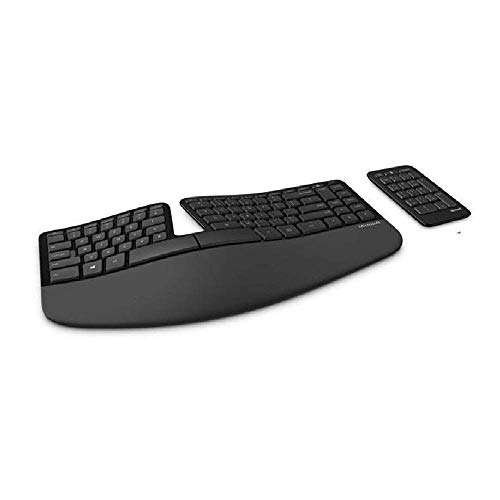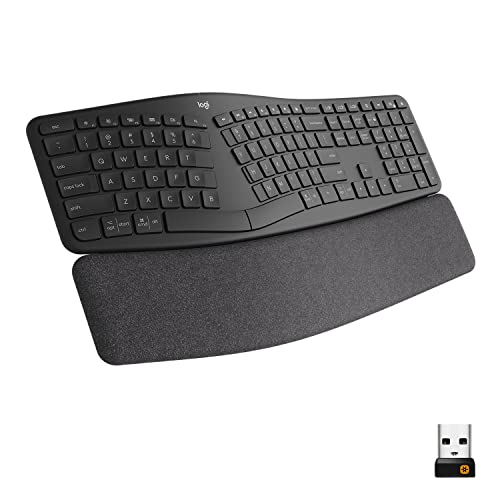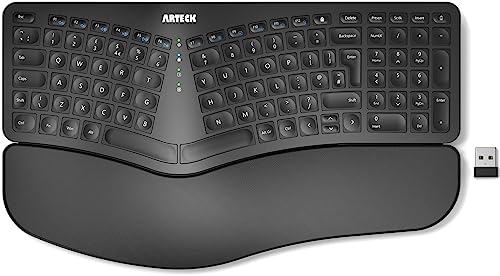1. Introduction
In today's digital age, many of us spend countless hours typing away at our keyboards. Whether you're a professional writer, a programmer, or simply someone who uses a computer regularly, the importance of a comfortable and efficient typing experience cannot be overstated. Enter the ergonomic keyboard – a revolutionary tool designed to enhance your typing comfort and potentially boost your productivity. These keyboards, including the best ergonomic keyboard options, ergo keyboard models, ortholinear keyboard designs, and split ergonomic keyboard layouts, offer a more natural typing experience.
2. What is an Ergonomic Keyboard?
An ergonomic keyboard is a specially designed input device that aims to provide a more natural and comfortable typing experience. Unlike standard keyboards, ergonomic keyboards are built with the human body in mind, particularly the natural hand position keyboard layout that reduces strain. Ergonomic keyboard for typing comfort is the primary goal.
Key features that set ergonomic keyboards apart include:
· Split keyboards designs that allow for a more natural hand position
· Curved keyboard or contoured layouts that reduce wrist strain
· Adjustable keyboard components for personalized comfort, such as tenting angles
3. Benefits of Using an Ergonomic Keyboard
The advantages of switching to an ergonomic keyboard are numerous:
1. Reduced strain and fatigue: By promoting a more natural hand position, ergonomic keyboards can significantly reduce the strain on your wrists, fingers, and forearms. The ergonomic design and ergonomic shape help alleviate shoulder strain.
2. Improved typing speed and accuracy: Many users report increased typing speed and fewer errors after adapting to an ergonomic keyboard, thanks to the ergonomic benefits and improved key placement.
3. Prevention of repetitive strain injuries (RSI): Regular use of ergonomic keyboards can help prevent or alleviate symptoms of repetitive strain injury, such as carpal tunnel syndrome. Keyboard for carpal tunnel sufferers can be especially beneficial.
4. Enhanced comfort for long typing sessions: The improved ergonomic features allow for more comfortable extended use, which is particularly beneficial for those who type for long periods. An ergonomic keyboard with wrist rest can further improve comfort.
4. Types of Ergonomic Keyboards
There are several types of ergonomic keyboards available, each with its unique ergonomic design approach:
5. Split ergonomic keyboard: These split keyboards are divided into two halves, allowing you to position each half at shoulder width for a more natural arm position. A keyboard that splits in half offers great flexibility.
6. Curved keyboard: These feature a curved design that matches the natural shape of your hands and the varying lengths of your fingers.
7. Vertical keyboards: Also known as "handshake" keyboards, these position your hands vertically, similar to a handshake position, to reduce forearm twisting.
8. Adjustable keyboard: These offer customizable features like tenting angles (angling the keyboard halves) and negative tilt to suit individual preferences.
Other notable types include the ortholinear keyboard with its grid-like ortholinear layout, ergonomic mechanical keyboard models with tactile switches, mechanical split keyboard options, wireless ergonomic keyboard models for added flexibility, separate keyboard designs with detached numpad, bluetooth split keyboard for wireless connectivity, two-piece keyboard layouts, and ergonomic mouse and keyboard combo sets for a complete ergonomic setup.
5. Key Features to Look for in an Ergonomic Keyboard
When shopping for an ergonomic keyboard, consider the following features:
· Split keyboards design: Allows for a more natural shoulder-width positioning of your hands. A true keyboard split is ideal.
· Tenting angles and negative tilt: Adjustable angles to match your natural wrist position. Look for flat slope options.
· Wrist rest: Provides support for your wrists during typing breaks. An ergonomic keyboard with wrist rest is a great option.
· Programmable keys: Customizable buttons for frequently used functions or macros enable keyboard customization.
· Mechanical vs. membrane switches: Ergonomic mechanical keyboard models often provide better tactile feedback and durability. Some even offer hotswap sockets for switch customization.
· Columnar stagger or ortholinear layout: These key placement options align keys in straight columns for more natural finger movements.
· Asymmetrical keys: Some designs feature different keycap shapes and sizes to match finger lengths and positions.
6. How to Choose the Right Ergonomic Keyboard
Selecting the perfect ergonomic keyboard involves several considerations:
9. Assess your needs: Consider your typing habits, any existing discomfort, and specific requirements (e.g., numeric keypad for data entry).
10. Consider your workspace: Ensure the keyboard fits comfortably on your desk and complements your other ergonomic equipment.
11. Budget considerations: Ergonomic keyboards range from budget-friendly to high-end models. Determine how much you're willing to invest in your typing comfort.
12. Try before you buy: If possible, test different models to find the one that feels most comfortable for you. Keep in mind the learning curve associated with adapting to a new ergonomic design.
7. Top Ergonomic Keyboards in the Market
While personal preference plays a significant role, here are some popular ergonomic keyboards to consider:
13. Microsoft Sculpt Ergonomic Keyboard: A split keyboards design with a cushioned palm rest and a separate keyboard number pad.
14. Kinesis Freestyle2: A fully split ergonomic keyboard with optional tenting angles accessories.
15. ErgoDox EZ: A highly customizable layout split ergonomic keyboard popular among programmers, featuring ortholinear layout and hotswap sockets.
16. Logitech ERGO K860: Features a split keyboards curved keyboard design with a built-in wrist rest.
8. Adapting to Your New Ergonomic Keyboard
Transitioning to an ergonomic keyboard may take some time. Here are some tips to ease the process:
17. Be patient: It may take a few weeks to fully adapt to the new layout. The learning curve can vary depending on the ergonomic design.
18. Practice regularly: Spend time each day typing on your new keyboard to build muscle memory and adjust to the ergonomic shape.
19. Use proper posture: Ensure your overall typing posture complements your new ergonomic keyboard setup.
20. Adjust as needed: Take advantage of any customizable layout features to find your perfect typing position.
9. Complementary Ergonomic Accessories
To create a fully ergonomic workspace, consider pairing your keyboard with:
· Ergonomic mouse: Vertical or trackball mice can reduce wrist strain. An ergonomic mouse and keyboard combo can provide a complete solution.
· Adjustable monitor stand: Ensures your screen is at the right height to prevent neck strain.
· Ergonomic chair: Provides proper support for long sitting sessions.
10. Conclusion
Investing in an ergonomic keyboard, whether it's an ergo keyboard, best ergonomic keyboard, ortholinear keyboard, split ergonomic keyboard, ergonomic mechanical keyboard, mechanical split keyboard, wireless ergonomic keyboard, curved keyboard, keyboard for carpal tunnel, separate keyboard, bluetooth split keyboard, ergonomic mouse and keyboard combo, two-piece keyboard, adjustable keyboard, or keyboard that splits in half, is a step towards a more comfortable and potentially more productive computing experience. By understanding the ergonomic features, ergonomic benefits, and options available, you can make an informed decision that best suits your needs. Remember, the goal is to create a natural hand position keyboard typing experience that feels comfortable, allowing you to work efficiently without compromising your physical well-being.
11. FAQs
21. Q: How long does it take to get used to an ergonomic keyboard?
A: Most users adapt within 1-2 weeks, but it can vary depending on the individual and the ergonomic design. The learning curve is different for everyone.
22. Q: Are ergonomic keyboards only for people with existing wrist problems?
A: No, they can be beneficial for anyone who types regularly, as they help prevent potential issues like repetitive strain injury and improve overall comfort.
23. Q: Can ergonomic keyboards really increase typing speed?
A: Many users report increased speed after an adjustment period, thanks to reduced fatigue and more natural hand position keyboard layouts.
24. Q: Are wireless ergonomic keyboards available?
A: Yes, many manufacturers offer wireless ergonomic keyboard versions of their keyboards, including bluetooth split keyboard models.
25. Q: Do I need to replace my ergonomic keyboard regularly?
A: Quality ergonomic keyboards can last for years. Replace when you notice wear and tear or if your needs change.






